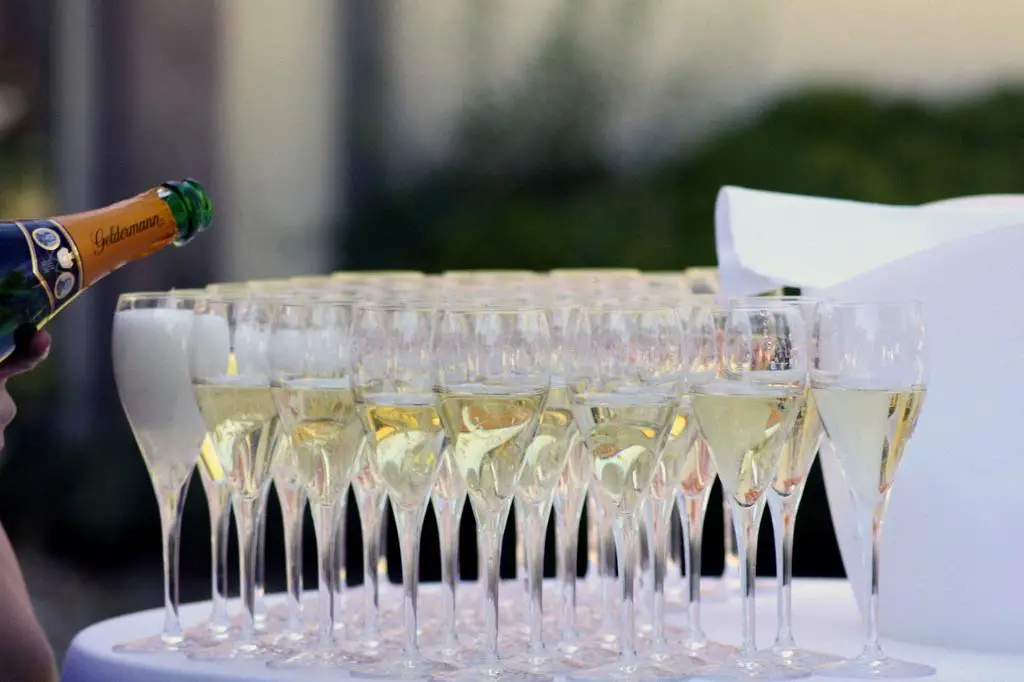When it comes to celebrating special occasions or enjoying a glass of bubbly, Champagne is often the drink of choice. But have you ever wondered why Champagne corks differ from those used in traditional wine bottles? In this article, we will unravel the mystery behind the distinct characteristics of Champagne corks.
The Purpose Behind the Design
The main reason Champagne corks differ from wine corks lies in the unique requirements of sparkling wines. Unlike still wines, Champagne and other sparkling wines undergo a second fermentation process. This process creates carbon dioxide (CO2) within the bottle, resulting in the delightful effervescence we associate with Champagne.
A Sturdy Structure for the Bubbles
Since sparkling wines naturally contain a significant amount of carbon dioxide, the corks used to seal these bottles must be able to withstand the pressure created by the trapped bubbles. This is where Champagne corks come into play. Unlike traditional wine corks, Champagne corks have a distinctive mushroom-shaped top, which offers a larger surface area to contain and maintain the pressure within the bottle more effectively.
Elasticity is Key
Another important difference lies in the composition of the cork material itself. Champagne corks feature a unique combination of natural cork and an additional layer of compressed cork or elastomer. This added layer enhances the elasticity of the cork, allowing it to withstand the extreme pressure in the bottle and regain its shape once the cork is removed.
The Power of Pressure
Sparkling wines, including Champagne, are typically bottled under higher pressure compared to still wines. While still wines are usually bottled at atmospheric pressure, sparkling wines are bottled with six to eight bars of pressure, creating a challenging environment for the closure system. The elasticity and mushroom shape of the Champagne corks help maintain this pressure inside the bottle, preventing any leakage or premature loss of effervescence.
A Barrier Against Oxygen Infiltration
Aside from withstanding pressure, Champagne corks also serve as a barrier against oxygen infiltration. The additional elasticity and thickness of the cork material minimize the chances of oxygen entering the bottle, which could potentially compromise the freshness and quality of the wine. This is particularly important for sparkling wines, as oxygen exposure can cause loss of effervescence and alter the flavors.
The Ritual of Opening Champagne
The unique design of Champagne corks not only serves functional purposes but also adds a touch of elegance to the ceremonial opening of a bottle. The distinctive “pop” sound and the mushroom-shaped cork flying through the air create a sense of celebration and excitement, signaling the beginning of a joyful moment.
Keeping Tradition Alive
Over the years, Champagne corks have become an iconic symbol associated with this prestigious sparkling wine. Champagne houses continue to use traditional cork closures as a testament to their commitment to quality and craftsmanship. Despite advances in technology and the availability of alternative closure methods, the use of Champagne corks has remained a beloved tradition that adds to the allure and prestige of Champagne.

In Conclusion
Champagne corks are different from those used in traditional wine bottles due to the unique requirements of sparkling wines. They are designed to withstand the high pressure created by carbon dioxide, maintain a barrier against oxygen infiltration, and add a touch of elegance to the experience of opening a bottle of Champagne. These distinctive corks have become an inseparable part of Champagne’s rich history and tradition, symbolizing celebration, luxury, and the art of fine winemaking.
